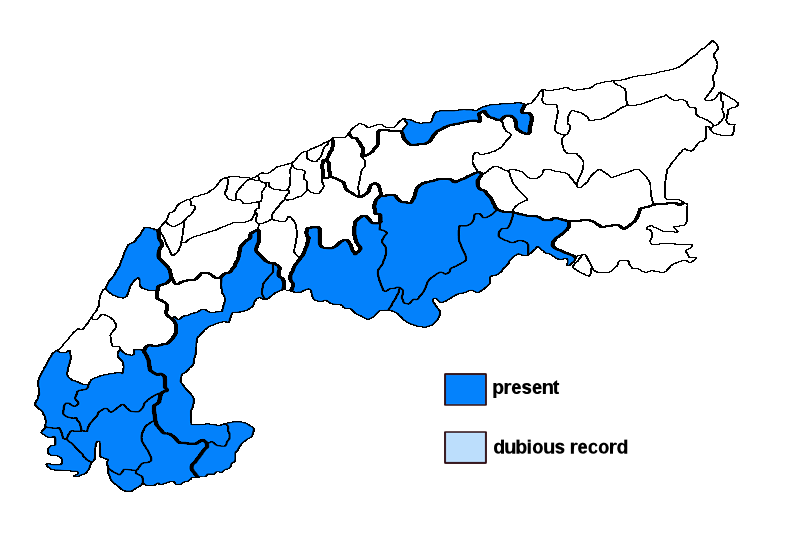Heteroplacidium fusculum (Nyl.) Gueidan & Cl. Roux
Syn.: Dermatocarpon insulare (A. Massal.) Mig., Dermatocarpon nantianum (H. Olivier) Zahlbr., Endocarpon insulare (A. Massal.) A. Massal., Endocarpon nantianum H. Olivier, Endopyrenium insulare (A. Massal.) Dalla Torre & Sarnth., Placidium insulare A. Massal., Verrucaria fuscula Nyl., Verrucaria insularis (A. Massal.) Jatta, Verrucaria insularis (A. Massal.) Jatta var. major Zehetl.
Lichenised.
Substrate: calciferous rocks,
Altitudinal range: from the mesomediterranean belt (potential vegetation: evergreen broad-leaved forests dominated by Quercus ilex) to the alpine belt (potential vegetation: treeless Alpine grasslands and tundras, to the lower limit of perennial snow and the equilibrium line of glaciers)
Note: a calcicolous species with a crustose-areolate, dark brown thallus but otherwise with a Heteroplacidium anatomy, growing on taxa of the Aspicilia calcarea-group, but finally often becoming independent; widespread and fairly common in the Mediterranean region, with some outposts in Central Europe; apparently more frequent in the Southern and Western Alps, mostly in the lowlands.
Germany: Oberbayern; France: Alpes-de-Haute-Provence; Haute-Alpes; Alpes-Maritimes; Drôme; Haute-Savoie; Vaucluse; Var; Italy: Friuli; Veneto; Trentino Alto Adige; Lombardia; Piemonte; Liguria;





